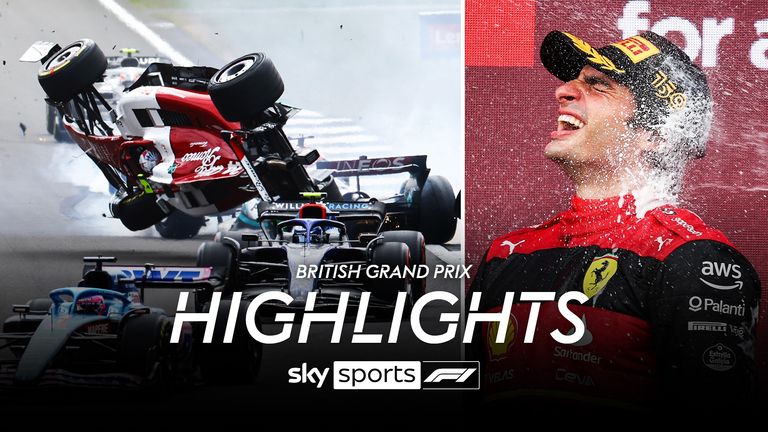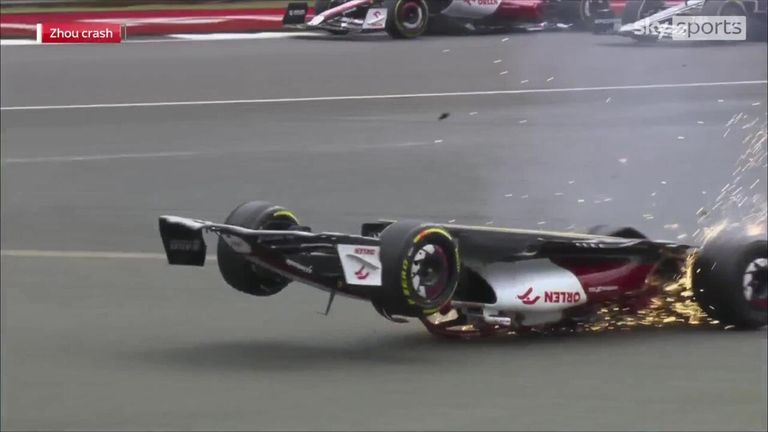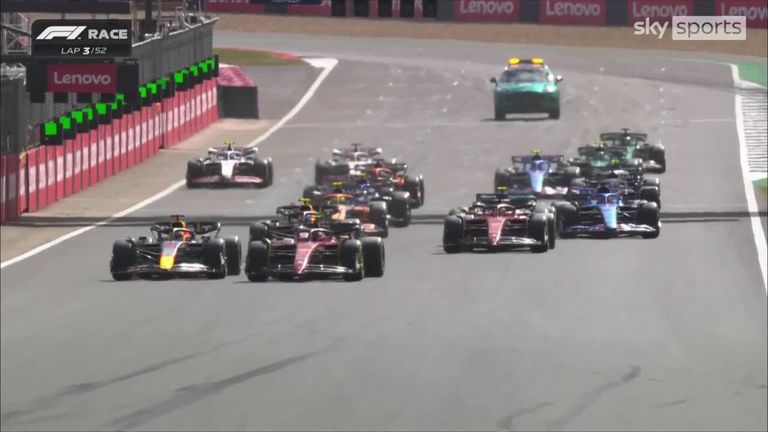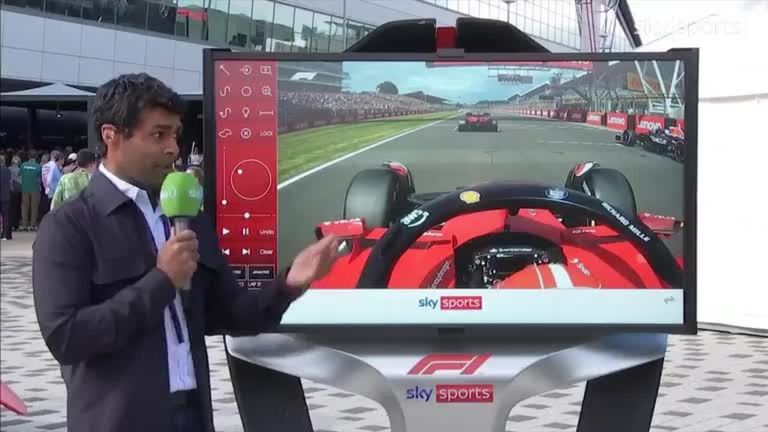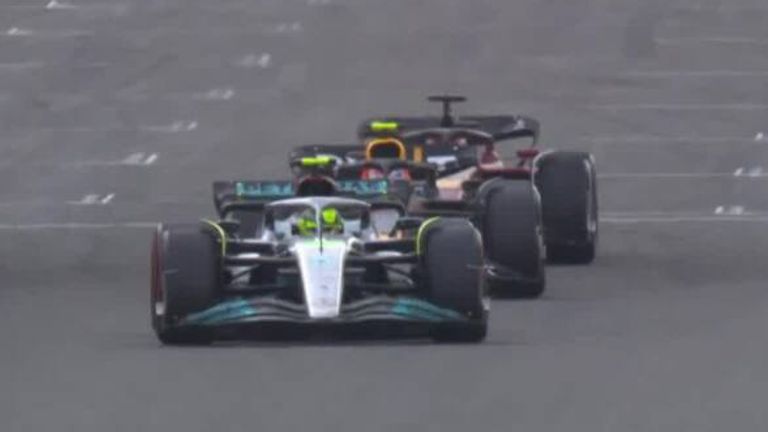
Martin Brundle
Expert Analyst @MBrundleF1
Martin Brundle on British GP: Zhou Guanyu's crash, Ferrari's strategy and one of F1's most dramatic races
In his latest column, Sky Sports F1's Martin Brundle delves into the British GP's astonishing moments - offering insight on the Zhou Guanyu crash and F1's safety, Ferrari's Sainz-Leclerc decisions, Lewis Hamilton's form, an unlucky Max Verstappen and much more...
Last Updated: 06/07/22 9:51am
This year's British Grand Prix was one of the best races I've ever attended and commentated on.
Silverstone looked magnificent, the massive crowd were relentlessly energised and vociferous from Thursday onwards, and both qualifying and the race were edge-of-your-seat unpredictable throughout.
- FIA's halo 'saved two lives' at Silverstone | Zhou ready for Austrian GP
- British GP: Winners and losers from a wild weekend
- Hamilton aims Verstappen dig after 'sensible' Leclerc fight
It must comfortably be in the top 10 races for me. Brazil 2008 was a cliff-hanger for the championship of course, and Hockenheim 2019 in the rain was wild. We've had some outstanding races in venues such as Suzuka and many others, but this thriller had it all in terms of jeopardy, spectacle, drama, and skilful wheel-to-wheel racing throughout.
It was bone dry so didn't rely on rain to spice it up, but a red flag and a full safety car played their roles.
The 'scary' and 'alarming' Zhou crash | What happened, and could it have been prevented?
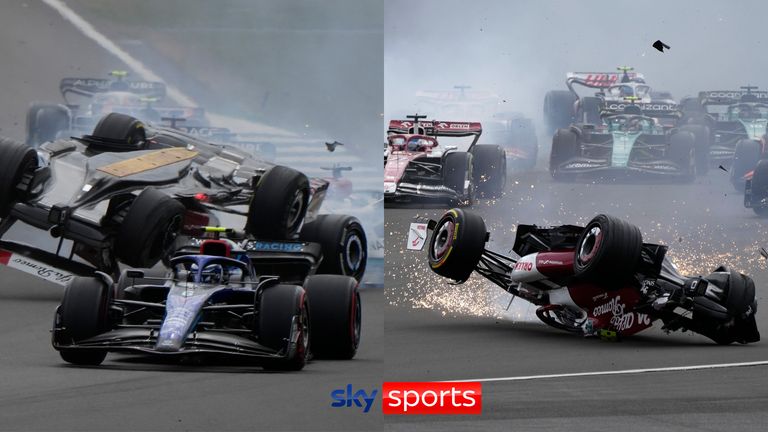
The first corner chaos was very scary for several reasons. In some ways it was one of those 'I'm surprised that doesn't happen more often' crashes as the cars weave their way down to turn one in close formation. It was compounded by the fact that all three available tyre compounds were involved in helping some launch very well, and others like George Russell on the slower hard compound tyre, struggling off the start line.
From this year the top 10 are no longer obligated to start on their actual qualifying tyres, and so this can lead to a mismatch of launch capability in the front half of the grid as well as the rest of the pack, meaning some are rapidly gaining ground and others falling back.
Russell appeared to misjudge how far alongside Pierre Gasly was, which is challenging whilst also carefully watching the mayhem ahead and controlling your own car and gearshifts. For his car to then immediately flip over Zhou Guanyu's Alfa Romeo was extraordinary given how low the centre of gravity is on these cars. Large sticky tyres and some momentum can clearly introduce such energy.
The regulations state that an F1 car and its driver must weigh at least 798 kgs and so on the start line cars fuelled for the race are now over 900kgs. Add in a turbinelike 1000 horsepower and, as we witnessed with Romain Grosjean's fiery accident in Bahrain 2020, there's a huge amount of energy to contain which circuits are only just about coping with.
With the car being upside down the very large tarmac run-off area couldn't do its usual job in slowing down four sliding tyres, and the gravel trap similarly could only work on the narrow upper surfaces of the car. Next the tyre crash barrier was presented with an inverted car at high speed and simply bounced it up and over.
Finally, the debris fencing to protect the grandstands arrested the car, mercifully for Zhou on contact with the underfloor of his car. I'm not qualified to say if the small space which the car wreckage then fell into needs to be there at all, or indeed bigger, that's for the FIA, marshals and circuit designers to decide.
It was alarming to later see that the rollover structure had broken off altogether but these items can't be infinitely strong otherwise the car would be so heavy, and then everything both on the car and at the crash site would need to be yet stronger again creating a vicious circle. We must lose some weight on the new 2026 cars.
Thank goodness his car didn't catch fire otherwise the consequences would have been dire. Or indeed if the trajectory had been different the car could have flipped through a marshal's post or camera stand.
The huge twist of fate here is that without the crash and immediate red flag the cars could well have very shortly been weaving down the Wellington straight to break the slipstream and atomised some protesters sitting on the track along with literally anybody else caught up in the carnage. This was irresponsible behaviour in the extreme.
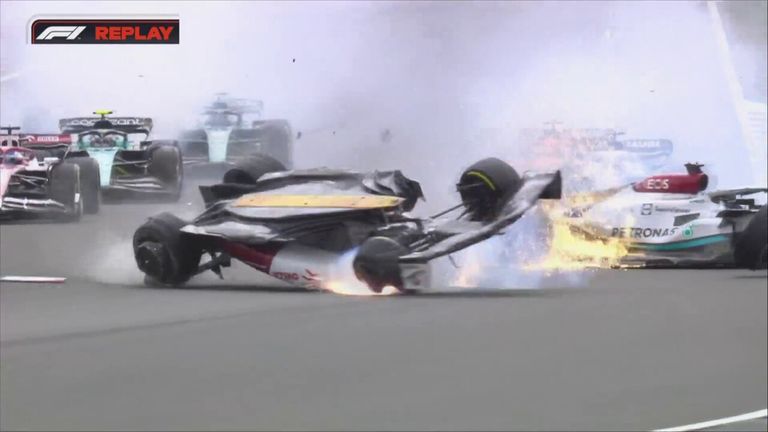
Another twist was that in the aftermath of the Russell/Zhou contact Alex Albon was turned into the pitwall in his Williams and took a harder hit than Zhou. As ever the spectacular crashes dissipate energy over a much longer period and providing nothing enters into your cockpit then you are less likely to be hurt, such as with my shunt in Melbourne in 1996. It's the sudden stop which really hurts.
The FIA, F1 and the teams have done a spectacular job on car and circuit safety which has benefitted all forms of motorsport around the world, and this includes integrity of fuel systems and the battery pack meaning there was time to extract Zhou. With Grosjean in Bahrain the car was simply torn apart.
Unlucky Verstappen and why Russell wasn't allowed to continue
The championship leader Max Verstappen didn't have much luck this year again. He should have been on pole position but a yellow flag scuppered his final run, and he easily led away the first start until the red flag. Because the cars still running had not passed the second safety car line which is between turns one and two, a key reference point in several regulations along with the first safety car line at pit entry, the restart order would be the original grid placings closed up to recognise that Zhou, Russell and Albon would take no further part.
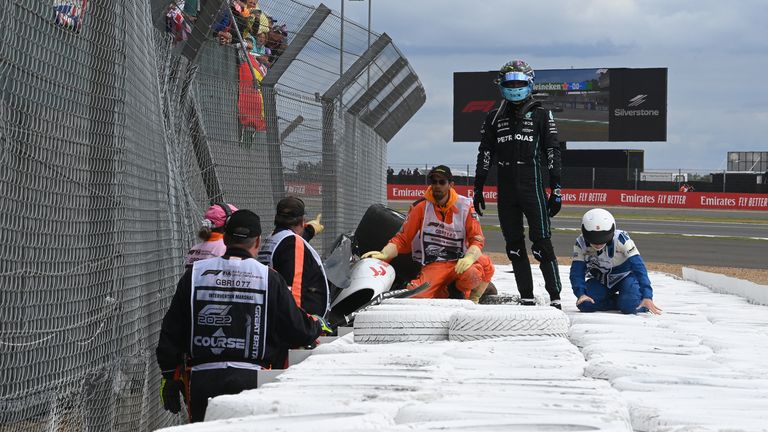
Russell could probably have coaxed his now three-wheeled Mercedes back to the pits, but he instinctively and valiantly jumped out to try to help with Zhou. His car wouldn't self-start and so under the regulations he was prohibited to restart for 'outside assistance'. This on the face of it seems harsh but you must return to the pits under your own steam, and there are copious marshals and medics suitably equipped to assist the stricken driver anyway. The Good Samaritan was sadly out of his home GP.
After the best part of an hour the race restarted and this time pole sitter Carlos Sainz pinched Verstappen hard to the inside and held onto the lead. That was tame compared to what would happen over the next 51 laps.
The 2022 F1 cars can follow more easily and this really showed up in the high speed and open nature of Silverstone. Also, they lose much less aero downforce and grip when side by side, plus the drivers have good command over the front axle to keep steering the cars at high speed offline, and confidence that the rear tyres will stick and not send them into a spin.
Furthermore the younger drivers have developed their skills in very safe cars, with reasonably robust suspension and bodywork, and secure circuits with smooth run off areas in many places. So they'll have a go at overtaking pretty much anywhere, both inside and outside of their rivals in any corner fast or slow, and with some pretty unorthodox moves.
This is not a race report, I'd advise watching the race again in that respect, but let's revisit some aspects.
Sainz lands long-awaited first win after Leclerc frustration
Sainz was unlucky not to win in Monaco and Montreal, and in my last Sky F1 column I mentioned I felt he was ready to win and then he would be up and running. Carlos is not at the moment as fast as his teammate Charles Leclerc, but he is extremely tenacious and more determined the further a race goes on. He never gives up and his head is strong.
Leclerc had front wing damage from the opening lap of the restart, and it must be said he was taking some risks in combat. Quite how he was going so fast with no wing endplate on one side I really don't know, and Ferrari were a little slow in asking Sainz to let him through which kept the flying Lewis Hamilton in a rejuvenated Mercedes very much in touch.
After that Leclerc appeared to have the race covered, providing he could do 27 laps on those hard tyres, until Esteban Ocon's Alpine ground to a halt on the old pit straight next to the accompanying pit wall. This was clearly going to be a safety car and so there was reasonable thinking time, but Ferrari didn't pit Leclerc on his 13 lap old hard tyres and this would leave him very vulnerable. A double stacked pit stop would have cost the following Sainz a few seconds in waiting time.
Conversely Sainz, Hamilton, Perez, Alonso and Norris of the front runners pitted for fresh soft compound tyres. When Leclerc was told about this over the radio his reply of 'this will be hard' was very prescient. He would be destined for a frustrated and likely angry fourth place. The one-time comfortable world championship leader has not been on the podium in the last five races and hasn't won for three months notwithstanding six pole positions this season.
It's not working well for him at Ferrari despite them clearly feeling he is the main championship rival to Verstappen. When the team asked Sainz to back the pack up by the maximum regulated 10 car lengths to give Charles some breathing space as he led the restart this was abundantly clear, as was Sainz's response along the lines of 'no, I'm the one on the right tyres and in the right place to win this race'.
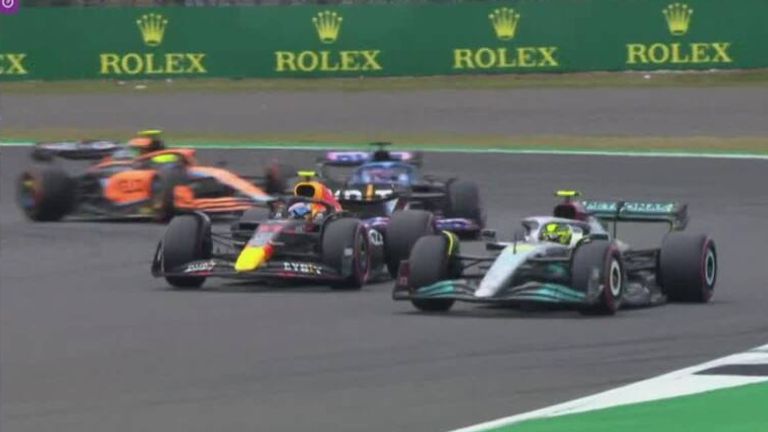
He saved Ferrari's day at that definitive moment, and I'm so pleased for Carlos and his family. And of course, the team.
Hamilton's home heroics, Perez closes on Max
Lewis Hamilton made the most of his improved Mercedes and without the safety car might just have won this race being on significantly fresher tyres than the two Ferraris and flying along nicely including fastest lap of the race. He also demonstrated that he's every bit a match for the younger generation when it comes to wheel-to-wheel action.
Sergio Perez had to pit early to replace his front wing and on lap six was down in 17th and last place. He had race-leading speed for much of the remainder and when the safety car played into his hands he was back in contention. Had he not been behind Leclerc's tyred out Ferrari so long he could have won too.
Fernando Alonso in the Alpine and Lando Norris for McLaren both had very competitive races and it was great to see Mick Schumacher winning his first world championship points in eighth whilst fiercely attacking Verstappen all the way to the finish line.
Verstappen had a massive slice of sister team Alpha Tauri's bodywork stuck in his underfloor like a dagger meaning half that critical underfloor wasn't generating downforce. P7 was the best he could slide around to, but he still has a 34-point championship lead over team-mate Perez.
As the massive crowd were allowed onto the track to celebrate near the podium, or went to the arena area to see their heroes later on stage, thank goodness everyone was in one piece and still alive. We'd all witnessed a truly great sporting event. Austria next weekend is the halfway point of the season.
MB

